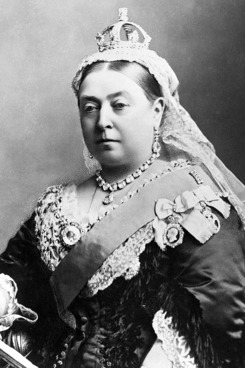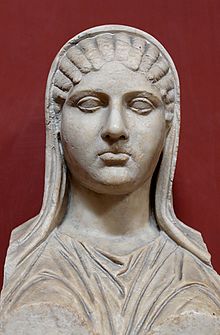Why is Princess Olga remembered to this day?

 Princess Olga lived between 890 and 969, and was the first female Russian ruler. For almost twenty years, she ruled Kievan Rus. Her very first act as a ruler was to take bloody revenge against the Drevlians, the people who had killed her husband, Prince Igor. Olga took revenge on the Drevlians by having their envoys killed, and their towns burned. She then abolished the annual tribute-collecting journeys made by the Kievan princes, and replaced it with a uniform system of taxation and special government tax-collectors.
Princess Olga lived between 890 and 969, and was the first female Russian ruler. For almost twenty years, she ruled Kievan Rus. Her very first act as a ruler was to take bloody revenge against the Drevlians, the people who had killed her husband, Prince Igor. Olga took revenge on the Drevlians by having their envoys killed, and their towns burned. She then abolished the annual tribute-collecting journeys made by the Kievan princes, and replaced it with a uniform system of taxation and special government tax-collectors.Princess Olga’s son was only three years old, when his father died. So, Olga ruled the country in his name, with the full support of the army. She was a very active ruler who travelled incessantly around the country, trying to improve life in her realm. Around 957, Olga travelled to Constantinople and was baptized in the Christian faith, under the sponsorship of the Byzantine emperor. Her baptism did not lead to the conversion of her people, but established the Eastern Orthodox Church in Russia.
In fact, she was the very first ruler of Kiev who converted to Christianity. The Orthodox Church proclaimed Olga a saint. Did you know that the name ‘Olga’ actually means ‘a saint’? So it seems as though she was destined to become one from the time she was named!

 Harriet Beecher Stowe was born in Connecticut, U.S.A., into a large family. She was named after her aunt, Harriet Foote, who influenced deeply her thinking, especially with her strong belief in culture. In 1834, Stowe began her literary career when she won a prize contest of the Western Monthly Magazine. Soon, Stowe was a regular contributor of stories and essays. Her first book, ‘The May flower’, appeared in 1843.
Harriet Beecher Stowe was born in Connecticut, U.S.A., into a large family. She was named after her aunt, Harriet Foote, who influenced deeply her thinking, especially with her strong belief in culture. In 1834, Stowe began her literary career when she won a prize contest of the Western Monthly Magazine. Soon, Stowe was a regular contributor of stories and essays. Her first book, ‘The May flower’, appeared in 1843.
 Mary Wollstonecraft was an English philosopher and writer. Her life was not an easy one. Her father was often violent and reckless with money. He also showed a marked preference for her brother, which made her life at home quite miserable. As a result, she became an early feminist who denied male supremacy, and advocated equal education and opportunities for women. She was one of the first people to argue for gender equality, and is best remembered for her work ‘A Vindication of the Rights of Woman,’ written in 1792. She led a radical and exciting life, mainly in London, but with significant time in France during the Revolution, and with life-changing visits to Ireland, Lisbon, Derbyshire, and Scandinavia.
Mary Wollstonecraft was an English philosopher and writer. Her life was not an easy one. Her father was often violent and reckless with money. He also showed a marked preference for her brother, which made her life at home quite miserable. As a result, she became an early feminist who denied male supremacy, and advocated equal education and opportunities for women. She was one of the first people to argue for gender equality, and is best remembered for her work ‘A Vindication of the Rights of Woman,’ written in 1792. She led a radical and exciting life, mainly in London, but with significant time in France during the Revolution, and with life-changing visits to Ireland, Lisbon, Derbyshire, and Scandinavia. Elizabeth was the daughter of King Henry VIII, and his second wife Anne Boleyn. She came to the throne only after much turmoil, on 17th November 1558. Elizabeth was dedicated to her country in a way few monarchs had been, or have been since. She had the mind of a political genius, and nurtured her country through careful leadership and by choosing capable men to assist her. In appearance she was extravagant, in behaviour sometimes flippant and frivolous, but her approach to politics was serious, conservative, and cautious. When she ascended the throne, England was an impoverished country torn apart by religious squabbles. When she died at Richmond Palace on the 24th March 1603, England was one of the most powerful and prosperous countries in the world.
Elizabeth was the daughter of King Henry VIII, and his second wife Anne Boleyn. She came to the throne only after much turmoil, on 17th November 1558. Elizabeth was dedicated to her country in a way few monarchs had been, or have been since. She had the mind of a political genius, and nurtured her country through careful leadership and by choosing capable men to assist her. In appearance she was extravagant, in behaviour sometimes flippant and frivolous, but her approach to politics was serious, conservative, and cautious. When she ascended the throne, England was an impoverished country torn apart by religious squabbles. When she died at Richmond Palace on the 24th March 1603, England was one of the most powerful and prosperous countries in the world.

 Catherine de Medici played an important part in the history of sixteenth century France. She had a sad childhood, for both her parents died when she was just a year old. She was brought up by nuns, who trained and disciplined her. As she grew older, she became very well-educated.
Catherine de Medici played an important part in the history of sixteenth century France. She had a sad childhood, for both her parents died when she was just a year old. She was brought up by nuns, who trained and disciplined her. As she grew older, she became very well-educated. Joan of Arc was born in 1412, in the little village of Domremy in France. Her father had often told her of the sad condition of France, how the country was largely in the possession of England, and how the French king did not dare to be crowned. This made Joan very sad, and she brooded over the matter so much that she began to have visions of angels, and heard strange voices, which said to her, ‘Joan, you can deliver the land from the English. Go to the relief of King Charles of France’.
Joan of Arc was born in 1412, in the little village of Domremy in France. Her father had often told her of the sad condition of France, how the country was largely in the possession of England, and how the French king did not dare to be crowned. This made Joan very sad, and she brooded over the matter so much that she began to have visions of angels, and heard strange voices, which said to her, ‘Joan, you can deliver the land from the English. Go to the relief of King Charles of France’.
 Eleanor of Aquitaine was fifteen years old in 1137 AD, and not yet married, when her father, the Duke of Aquitaine, died suddenly. Eleanor had no brothers, so she inherited her father’s duchy, which included most of Southern France. This inheritance made her one of the richest women in Europe.
Eleanor of Aquitaine was fifteen years old in 1137 AD, and not yet married, when her father, the Duke of Aquitaine, died suddenly. Eleanor had no brothers, so she inherited her father’s duchy, which included most of Southern France. This inheritance made her one of the richest women in Europe.


 Boudicca, a woman of unusual courage, was the queen of the Iceni people of Eastern England. She led a major uprising against occupying Roman forces. Boudicca was married to Prasutagus, ruler of the Iceni people of East Anglia. When the Romans conquered Southern England in AD 43, they allowed Prasutagus to continue to rule. However, when Prasutagus died, the Romans decided to rule the Iceni directly. Boudicca herself was stripped and beaten by the Romans, and she rose in fury to lead an uprising against them.
Boudicca, a woman of unusual courage, was the queen of the Iceni people of Eastern England. She led a major uprising against occupying Roman forces. Boudicca was married to Prasutagus, ruler of the Iceni people of East Anglia. When the Romans conquered Southern England in AD 43, they allowed Prasutagus to continue to rule. However, when Prasutagus died, the Romans decided to rule the Iceni directly. Boudicca herself was stripped and beaten by the Romans, and she rose in fury to lead an uprising against them. Who has not heard of Cleopatra, the beautiful ruler of Ancient Egypt? She is one of the greatest political and romantic figures in history. She called herself the daughter of the Egyptian Sun God Ra, and became the ruler of Egypt along with her younger brother in 51 BC, at a time when Egypt was facing great hardship. The Romans were seizing more and more Egyptian territories, and there was wide-spread famine throughout the land. Cleopatra herself had many enemies who succeeded in driving her out of the country. They then seized power in the name of her younger brother, who was also the ruler.
Who has not heard of Cleopatra, the beautiful ruler of Ancient Egypt? She is one of the greatest political and romantic figures in history. She called herself the daughter of the Egyptian Sun God Ra, and became the ruler of Egypt along with her younger brother in 51 BC, at a time when Egypt was facing great hardship. The Romans were seizing more and more Egyptian territories, and there was wide-spread famine throughout the land. Cleopatra herself had many enemies who succeeded in driving her out of the country. They then seized power in the name of her younger brother, who was also the ruler. Hypatia was the daughter of a teacher of mathematics, who lived in Alexandria in Ancient Egypt. She studied under her father, and other great scholars of the time, including Plutarch. Hypatia herself grew up to become a renowned scholar and teacher, who wrote on mathematics, astronomy, and philosophy.
Hypatia was the daughter of a teacher of mathematics, who lived in Alexandria in Ancient Egypt. She studied under her father, and other great scholars of the time, including Plutarch. Hypatia herself grew up to become a renowned scholar and teacher, who wrote on mathematics, astronomy, and philosophy. Aspasia will go down in history as one of the first truly liberated women, not just in Ancient Greece, but in the world. She was born into a wealthy family around 400 BC, in the lonian city of Miletus, which is a part of modern Turkey. As a child, Aspasia received an excellent education, unlike most girls of that era.
Aspasia will go down in history as one of the first truly liberated women, not just in Ancient Greece, but in the world. She was born into a wealthy family around 400 BC, in the lonian city of Miletus, which is a part of modern Turkey. As a child, Aspasia received an excellent education, unlike most girls of that era.